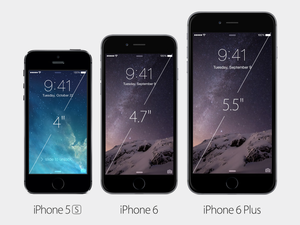Seagate Technology is boosting investments in laser-assisted hard disk drive technology that it projects will allow it to increase capacity five-fold.
The laser technology, known as heat-assisted magnetic recording (HAMR), is able to write smaller, more-stable bits onto the magnetic surface of a spinning disk. Today, Seagate's largest capacity drive using conventional recording is 6TB. Using HAMR, that capacity could theoretically increase to 30TB.
Last month, Invest Northern Ireland, a regional business development agency, announced Seagate had dropped about $55 million into further financing its existing wafer facility in Northern Ireland, which is developing HAMR technology. The Dublin facility is one of two working on HAMR; the other is located in Minnesota.
 Seagate
Seagate A prototype of a HAMR drive.
The marketing campaign Seagate has used is "20TB by 2020," but Seagate CTO Mark Re told Computerworld that's just a target. Seagate is planning to release its first HAMR-enabled drives in 2016.
"We're still doing development of the technology," Re said. "It's not like we're ready to ramp for production."
Along with HAMR and its ability to increase drive density, Seagate is also working on something known as two dimensional magnetic recording (TDMR), which places one more data reader onto a drive's read/write head.
"So that addresses the read part of the data, as opposed to the write part of the data that HAMR's addressing. We're thinking that this can also boost some of the areal density and performance of the drive as well," Re said.
Conventional recording technology, known as perpendicular magnetic recording (PMR), is able to lay down 750Gbits per square inch on a spinning platter.
Seagate has also bolstered the capacity of its 3.5-in data center drives using PMR along with shingled magnetic recording (SMR), which overlaps data tracks like shingles on a rooftop; SMR has increased bit density on platters by 25% or more, to about 1Tbit per square inch.
HAMR technology will increase it to 5Tbits per square inch, Re said.
With conventional magnetic recording, as bits are squeezed closer together, the magnetic fields can cause the bits to flip, turning a zero into a one or vice versa.
HAMR integrates a semi conductor laser onto a hard drive recording transducer. The lasers are able to set down smaller bits, but ones that are also harder to overwrite, which makes the media more stable by reducing overwrite errors.
The need for greater capacity hard drives is being driven by cloud infrastructures and big data -- enormous stores of unstructured file data that can be mined for valuable data about, say, customer buying patterns..
Seagate is initially targeting HAMR technology for use in enterprise data centers, but Re said there's definitely a market in consumer drives for laptops and desktops.
In the consumer drive market, Seagate is likely to use HAMR to lower costs, which should translate into lower prices. For example, in a 2TB laptop drive, there are two platters and four recording heads or read/write heads. In principle, HAMR would increase the areal density to the point where one platter and set of heads could be removed.
"So you would have effectively lowered cost at that capacity point. That's usually how we leverage areal density in the client market," Re said.
Seagate has also been investing heavily in hybrid drives, which use a small amount of NAND flash memory as a caching element along with traditional spinning disk storage. The drives come close to SSD performance at a fraction of the price. Re said HAMR technology will also be used to increase capacity in those drives.
"We could see combinations of all of these technologies as we move out through the next decade," Re said.





















